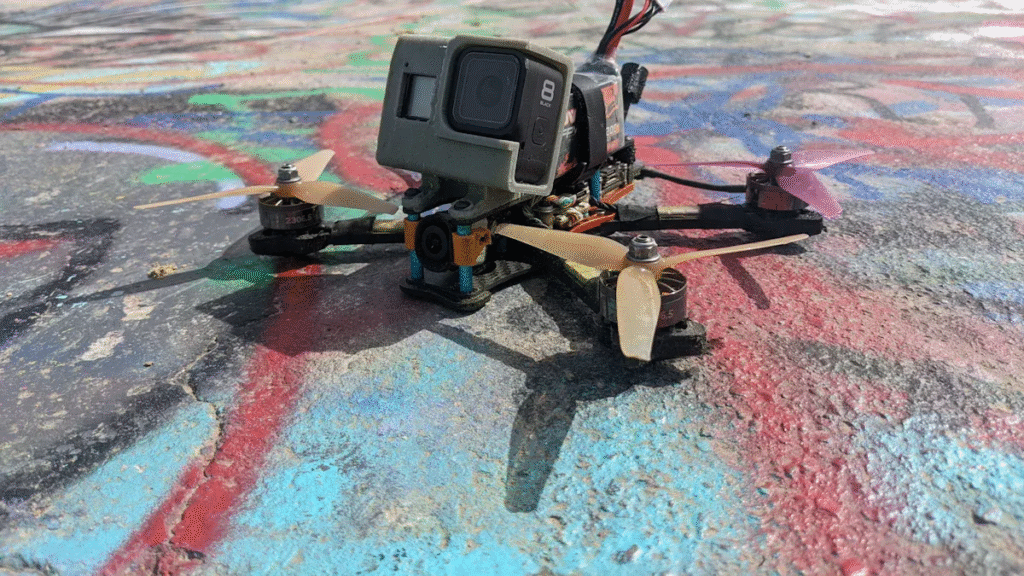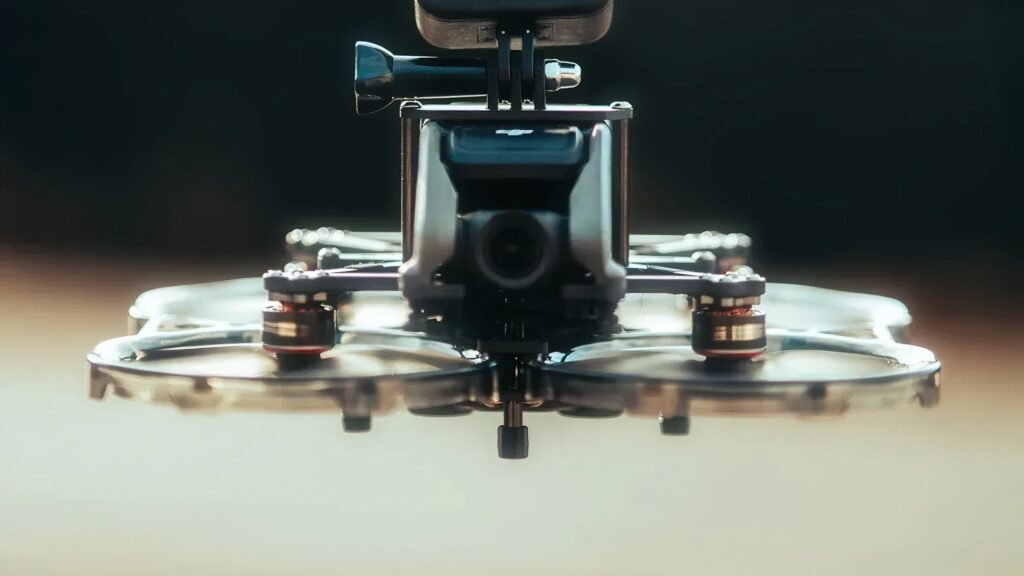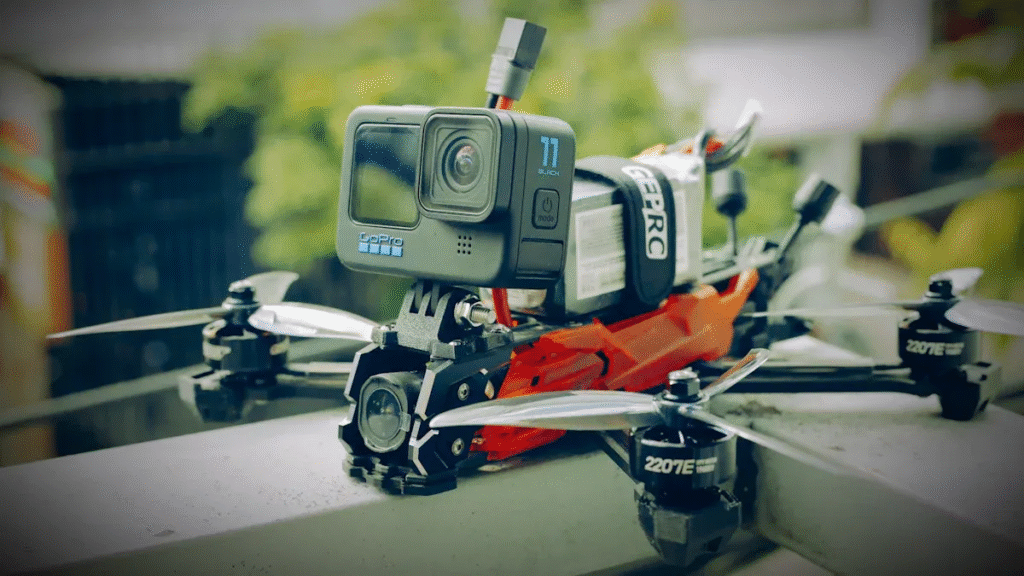Selecting the right FPV drone motors requires more than just matching parts. You need to consider thrust-to-weight ratio, motor size, and KV rating to achieve optimal performance. For example, a quadcopter weighing 1 kg should use motors that produce at least 2 kg of combined thrust for stable flight. The table below highlights essential benchmarks for different drone types and uses:
| Parameter | Recommended Value |
|---|---|
| Thrust-to-weight ratio | ~50% more thrust than drone weight |
| Racing drone ratio | 5:1 (thrust:weight) |
| Cinematic drone ratio | 3:1 to 4:1 |
| Motor weight (5″ racing) | 25-35g |
| KV rating (5″ freestyle) | 2200-2700KV |
Frame and Use
Frame Size
When you select a motor, start by looking at your drone’s frame size. The frame size, measured as the diagonal distance between motor centers (wheelbase), determines the maximum propeller size you can use. Larger frames support bigger propellers, heavier batteries, and more powerful motors. Smaller frames work best with lighter components and smaller propellers.
| Frame Size (mm) | Propeller Size (inches) | Typical Use Case | Battery Capacity (mAh) |
|---|---|---|---|
| 65-75 | Whoops (very small) | Indoor / Limited outdoor | 200-450mAh 1S/2S |
| 90-120 | 2″ | Freestyle / Racing | 450-850mAh 3S/4S |
| 120-150 | 3″ | Freestyle / Racing | 850-1300mAh 3S/4S |
| 160-200 | 4″ | Freestyle / Racing | 1300-1800mAh 4S/6S |
| 210-250 | 5″ | Freestyle / Racing | 1300-1800mAh 4S/6S |
| 250-330 | 6″ | Long Range / Freestyle | 1300-2200mAh 4S/6S |
| 280-330 | 7″ | Long Range | 3000-6000mAh 6S |
| 330-380 | 8″ | Long Range / Heavy-lift | 4500-6000mAh 6S |
| 355-405 | 9″ | Long Range / Heavy-lift | 6500-8000mAh 6S |
| 405-455 | 10″ | Long Range / Heavy-lift | 7500-8000mAh 6S |
Tip: Larger frames need motors that can handle higher thrust and heavier loads. Always match your motor’s power to your frame’s size and intended use.
Frame layout also matters. H frames have a longer body and higher moment of inertia, which can make them less agile. True-X frames offer balanced handling, while Deadcat frames may introduce yaw-roll mixing. Each layout changes how your drone responds to control inputs, so choose a motor that complements your frame’s dynamics.
Flying Style
Your flying style shapes your motor choice. If you fly freestyle, you want motors that deliver smooth, predictable power for tricks and acrobatics. Racing pilots need high-thrust motors for rapid acceleration and sharp turns. Long-range flights require efficient motors that maximize battery life and provide steady thrust.
- Freestyle: Choose motors with moderate KV and good torque for control.
- Racing: Pick high-KV, lightweight motors for speed and agility.
- Long Range: Select efficient, lower-KV motors for endurance.
Think about your main goal. If you want to race, prioritize speed and responsiveness. If you prefer cinematic footage, focus on stability and smooth power delivery. Matching your motor to your flying style ensures your drone performs exactly how you want.
FPV Drone Motors: Specs

KV Rating
KV rating tells you how many revolutions per minute (RPM) your motor will spin for each volt you supply. For example, a 2300KV motor on a 4S (16.8V) battery will spin at about 38,640 RPM with no load. Higher KV motors spin faster but produce less torque. Lower KV motors spin slower but generate more torque, which helps when using larger propellers.
- KV rating, propeller size, and thrust connect through basic physics. Thrust depends on how fast and how hard the propeller spins. KV rating and battery voltage set the RPM. Propeller size and pitch determine how much air you move.
- You must balance these factors. A high KV motor with a large propeller can overload the motor and drain your battery quickly. A low KV motor with a small propeller may not give enough thrust.
- Community research shows that you should not look at KV rating alone. You need to consider motor size, battery voltage, and propeller limits together. Many pilots use charts and real-world data to find the best combinations for their FPV drone motors.
Tip: For racing, choose higher KV motors with smaller props for speed. For long-range or cinematic flying, use lower KV motors with larger props for efficiency.
Stator Size
Stator size describes the width and height of the motor’s core. You will see numbers like 2306 or 2207. The first two digits show the width in millimeters, and the last two show the height.
| Aspect | 2306 Motor Stator | 2207 Motor Stator |
|---|---|---|
| Stator Dimensions | 23mm width, 6mm height | 22mm width, 7mm height |
| Stator Volume | ~2491.59 mm³ | ~2659.58 mm³ |
| Weight | ~29g | ~32g |
| Cooling Efficiency | Better cooling, smoother flight | Less cooling, more power |
| Torque & Power | Less torque | More torque |
| Responsiveness | Smoother, less responsive | More responsive |
| Efficiency & Use Case | Efficient, long-range builds | Powerful, aggressive flying |
A taller stator (like 2207) gives you more torque and faster response. This helps in racing or aggressive freestyle. A wider stator (like 2306) offers smoother power and better cooling, which suits long-range or cinematic flights. You should match stator size to your flying style and propeller choice. Larger stators handle bigger props and heavier drones.
Efficiency
Efficiency measures how well your FPV drone motors turn electrical power into thrust. High efficiency means less wasted energy and longer flight times. You want efficient motors for endurance and smooth flights.
Flight time depends on battery capacity and drone weight. Adding a bigger battery does not always mean longer flights because extra weight increases the load on your motors. The battery’s C-rating also matters. It shows how much current the battery can safely deliver. Heavier drones need batteries with higher C-ratings to keep up with power demands.
Motor and propeller efficiency also change with battery choice and system setup. For example, a 700KV motor with a 3300mAh battery can reach 64.29% efficiency, while the same motor with a 6000mAh battery drops to 62.01%. Larger batteries can increase payload and endurance but may lower propeller efficiency. You should always test different setups to find the best balance for your needs.
Note: Watts and efficiency matter as much as thrust. Always check real-world data and pilot feedback when choosing FPV drone motors.
How Specs Relate to Propeller Size and Drone Weight
You must match your motor specs to your propeller and drone weight for the best results. Here is a quick guide:
- Use higher KV motors with smaller props for lightweight, fast drones.
- Use lower KV motors with larger props for heavier, long-range drones.
- Make sure your motor can handle the propeller size without overheating.
- Aim for a thrust-to-weight ratio of at least 2:1 for stable flight. Racing drones often use 5:1, while cinematic builds use 3:1 to 4:1.
Estimate your required thrust by multiplying your drone’s weight by your target thrust-to-weight ratio. For example, a 500g drone for freestyle should have motors that produce at least 1500g of combined thrust.
Battery and Propeller Match

Battery Voltage
Selecting the right battery voltage is essential for safe and efficient drone performance. You must match your motor’s voltage range with your battery. For example, a 3S battery delivers 11.1V, a 4S battery delivers 14.8V, and a 6S battery delivers 22.2V. Higher voltage increases motor RPM and power output, which can boost speed and thrust. However, you need to ensure your electronic speed controller (ESC) can handle the current draw from your FPV drone motors. Always check that the ESC rating exceeds the motor’s maximum current.
- Match the battery voltage to the motor’s recommended range.
- Higher voltage batteries (like 6S) provide more power and efficiency for racing drones.
- Use a Battery Eliminator Circuit (BEC) to protect sensitive electronics if needed.
- Test your setup on a thrust stand to measure RPM, temperature, and current draw.
- Avoid underpowered motors, as they can overheat and cause system failure.
In FPV racing, pilots often use 6S batteries with 2500KV motors for maximum acceleration and thrust. This combination works best when all components are rated for the higher voltage.
Propeller Size
Propeller size and pitch have a direct impact on thrust, efficiency, and motor load. Larger or higher-pitch props generate more lift but require more power, increasing the load on your motors. If you use props that are too large, you risk overheating the motors and reducing their lifespan. Proper propeller selection ensures your motors run within their optimal RPM range.
- Match propeller size to the motor’s design for best efficiency.
- Larger props (like 18-19 inch) suit motors built for heavy lifting and long-range flights.
- Smaller props (like 4-5 inch) work well with high-KV motors for racing and freestyle.
- Propeller pitch and airfoil shape also affect lift and flutter speed, which can cause vibrations and motor wear.
Here are some common motor and propeller pairings:
| Motor KV Range | Propeller Pitch & Diameter | Payload Capacity | Performance Effect |
|---|---|---|---|
| 1100KV – 1500KV | 4×4, 5×4 | Lightweight drones | Efficient, high torque, longer flight times |
| 1500KV – 1900KV | 5×4.5, 6×4.5 | 1-2 kg payloads | Balanced thrust and efficiency |
| 1900KV and above | 7×5, 8×5 | Heavy payloads (>2kg) | High thrust, less efficient, shorter flight times |
Tip: Always check real-world thrust data and adjust your propeller size or battery voltage to optimize your FPV drone motors for your specific build.
Quality and Budget
Durability
When you choose a motor for your drone, durability should be a top priority. You want a motor that can handle crashes, vibrations, and long hours of flight. Brushless DC motors stand out for their efficiency and long lifespan. These motors use high-quality bearings and strong magnets, which help them resist wear and tear. Many pilots prefer brushless motors because they require less maintenance and deliver consistent performance over time.
You should also look for features like reinforced motor shafts, quality windings, and solid mounting bases. These details help your motor survive hard landings and frequent use. Some brands offer extra protection, such as waterproof coatings or dust shields, which can extend the life of your motor in harsh environments.
Tip: Always inspect your motors after a crash. Replace damaged bearings or bent shafts right away to avoid further problems.
Price
Motor prices can vary widely. You will find budget options for less than $15, mid-range motors around $20, and premium models that cost $30 or more. Price often reflects the quality of materials, precision of manufacturing, and overall reliability. More expensive motors usually offer better durability, smoother operation, and higher efficiency.
Consumer reports show that mid-range motors strike a good balance between cost and performance. For example, a $20 motor can deliver efficient power and long flight times, especially for long-range flying. However, long-term reliability may still be uncertain at this price point. Premium motors, while costly, provide greater peace of mind with improved reliability and precision. The trade-off is clear: higher prices bring better performance and dependability, but you must decide if the extra investment fits your needs and budget.
| Price Range | Durability | Efficiency | Best For |
|---|---|---|---|
| <$15 | Low | Moderate | Beginners, practice |
| ~$20 | Moderate/Good | Good | Freestyle, long-range |
| $30+ | High | Excellent | Racing, pro filming |
Use this checklist to guide your FPV drone motors selection:
- Match motor size and stator dimensions to your frame and flying style.
- Choose a KV rating that fits your propeller and battery voltage.
- Balance thrust, efficiency, and current draw for safe, responsive flight.
- Pair clockwise and counterclockwise motors for stability.
- Consider weight, torque, and temperature management for durability.
Experiment with tuning and data-driven adjustments to optimize your setup. The right FPV drone motors improve performance and flight enjoyment. For deeper learning, explore structured courses and case studies that analyze real-world drone builds.



